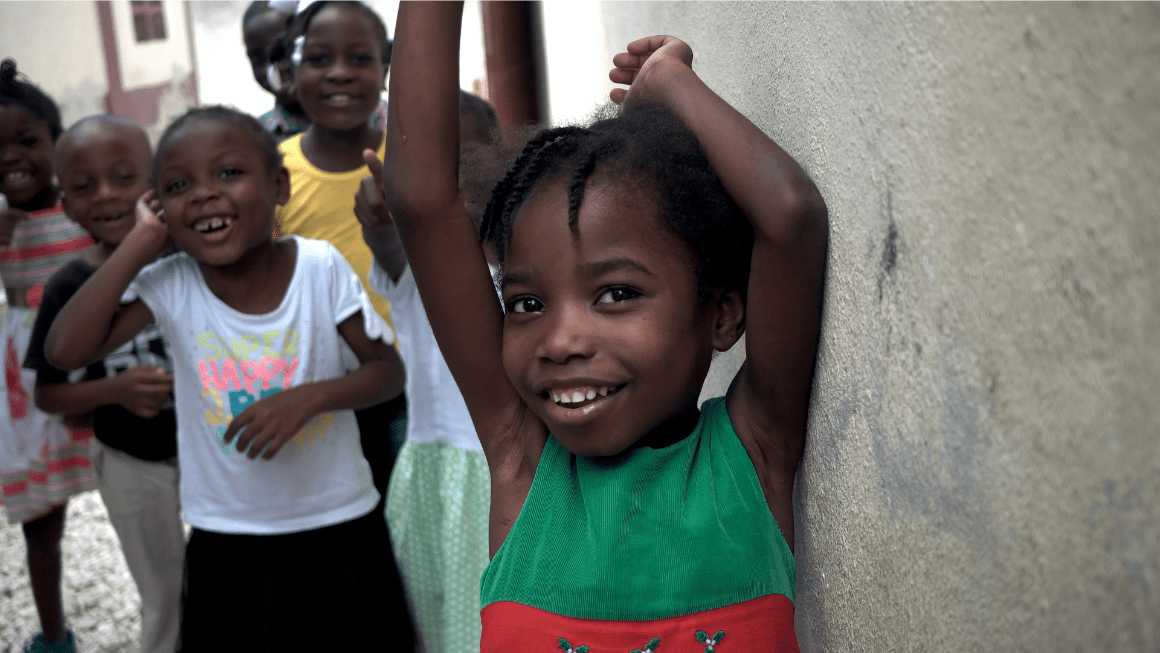
Honoring Indigenous Childhood in Haiti
Though children in Haiti face many challenges, anthropologist Diane Hoffman believes predominately western efforts to support them should center more elements of Haitian culture.
Education anthropologist Diane Hoffman has been studying childhood in Haiti since 2007. In February she published a book capturing her 13 years of fieldwork there.
“Childhood in Haiti looks very different from what western or American childhood looks like,” said Hoffman, associate professor at the UVA School of Education and Human Development. “And those differences should be honored by the well-meaning organizations working inside of Haiti to improve outcomes for children.”

According to Hoffman, non-government and faith-based organizations flooded into the country after the 7.0 magnitude earthquake hit Haiti in 2010 and continued, following two subsequent hurricanes, to help rebuild the devastated country. This influx has created a tension between what Haitian childhood has historically looked like and the ways many NGOs are hoping to improve it.
We sat down with Hoffman to hear more about her work and her new book, A Critical Anthropology of Childhood in Haiti: Emotion, Power, and White Saviors.
Q. Over the last decade, Haiti has experienced a series of natural disasters and currently faces increased gang violence. What impact has all of that had on children in the country?
The challenges facing Haiti are incredibly complex. My UVA colleague, Robert Fatton Jr.’s recent Q&A speaks to the challenges of the current moment. But it is safe to say that the lack of government stability, high levels of poverty, and lack of access to things like healthcare have had significant negative impacts on Haitian children.
But the reason I wrote my book is to help reframe the narrative and emphasize the cultural values of Haitian childhood. There is a robust discourse about the problems facing children in Haiti, but very little looking at childhood overall.
Q. What are some of the examples of the tension between western notions of childhood and the characteristics of more indigenous Haitian childhood?
One example is that in Haiti, it is extremely common for a child not to grow up in the same family as their biological family. Instead, children are often sent to live with families—sometimes extended relatives and sometimes not—that have a higher economic status than their birth family. Typically, it is a very modest difference. But it still brings with it the hope of increased social and educational opportunities.
In western culture, that is often reflected in the work of the NGOs in Haiti, there is a focus on the nuclear family. The notion of a biological mother and father as being the best for children conflicts with the ways the extended family has always been considered the ideal for rearing children, because it provides a chance for the family to grow across time and space and offer more opportunities for the future.
Relatedly, children and adolescents often spend long stretches of time in peer groups, away from the supervision of adults. And these groups provide an incredible opportunity for learning between and among peers and siblings.
I remember one time seeing a group of children all crowded around in a circle. At the center, one of their peers was busy repairing a bicycle. The rest of the children were paying close attention, taking the opportunity to learn how to fix a bike for themselves.
Q. You mentioned the informal education that happens among peers. What role does formal and informal education have in Haitian childhood?
Language poses a unique barrier to formal education in the country, 80% of which is private. French is the language of the Haitian upper class, and it is estimated that only about 5% of the population speaks it to any degree. The rest of the country speaks Haitian Creole. But schooling still prioritizes French and most of the educational materials are printed in French. For families who can afford to educate their children, they want their children to learn in French.
But that, of course, leaves out a lot of children. Even though the Ministry of Education has emphasized expanding formal education in Haitian Creole, there are significant barriers facing the education system.
So, informal education is very important for Haitian children. Whether from their peers or their host families, learning how to run a household, purchase food, cultivate a farm, are all seen as forms of self-cultivation, even without formal schooling.
Q. What would it look like to better support children in Haiti?
Ideally, the organizations seeking to help would be more culturally attuned. I believe that there are ways non-Haitian organizations can support social transformation in Haiti. But it is important to be sure we support what well-being, families, and education look like, as defined by Haitian culture, not our own. It is definitely going to look different and, I would argue, be more valuable.
News Information
Media Contact
Audrey Breen
